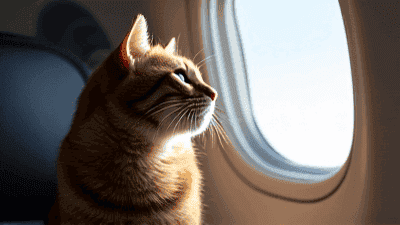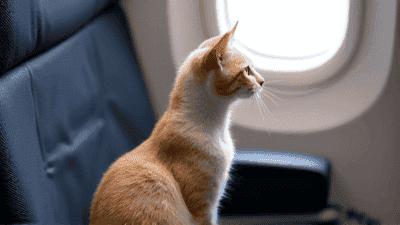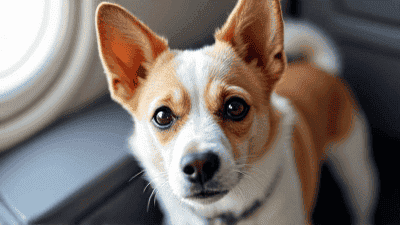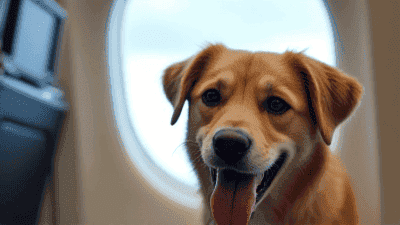
Traveling with your pet can be a rewarding experience, but it requires careful planning and preparation, especially when it comes to air travel. Whether you’re relocating, going on vacation, or visiting family, ensuring your pet’s safety and comfort during the journey is essential. Air travel can be stressful for pets, but with the right preparation, you can make the process smoother and more enjoyable for both of you.
Each airline has specific rules and regulations regarding pet travel. Some airlines allow pets in the cabin, while others require them to travel in the cargo hold. Research the policies of your chosen airline well in advance to ensure you meet all requirements.
Certain breeds, particularly brachycephalic (short-nosed) dogs and cats, may face restrictions due to respiratory issues. Check with your airline to see if your pet’s breed is allowed.

Your pet’s carrier should be spacious enough for them to stand, turn around, and lie down comfortably. Measure your pet and choose a carrier that meets airline size requirements.
Ensure the carrier has adequate ventilation and secure latches. Soft-sided carriers are often preferred for in-cabin travel, while hard-sided carriers are more durable for cargo travel.
Allow your pet to get used to the carrier by placing it in your home with the door open. Add comfortable bedding and toys to create a positive association.
Schedule a veterinary checkup to ensure your pet is healthy enough for travel. Update vaccinations and obtain a health certificate if required by the airline.
Ensure your pet is microchipped and wears an ID tag with your contact information. This is crucial in case your pet gets lost during the journey.
If your pet isn’t used to being in a carrier, start crate training well before the trip. Gradually increase the time they spend in the carrier to help them feel comfortable.

Place an item with your scent, such as a T-shirt, in the carrier to comfort your pet.
Consider using calming sprays, pheromone diffusers, or anxiety wraps to reduce stress. Consult your vet for recommendations.
Take your pet for a long walk or play session before the trip to help them burn off energy and relax.
Avoid feeding your pet a large meal right before the flight. Offer a light meal 3-4 hours before travel to prevent stomach upset.
Provide water up to the last minute, but ensure your pet has a chance to relieve themselves before boarding.
For long flights, check if the airport has pet relief areas where your pet can stretch their legs and use the bathroom.

Keep the carrier under the seat in front of you and avoid opening it during the flight. Speak softly to reassure your pet.
Inform the airline staff that your pet is traveling in the cargo hold. Confirm that the temperature in the cargo area is regulated and safe for pets.
Watch for signs of stress, such as excessive panting or whining. If you’re concerned, notify the flight crew for assistance.
When you arrive, take your pet to a quiet area to reunite and allow them to calm down.
Provide fresh water and a small meal once your pet has settled. Monitor their behavior for signs of illness or stress.
If you’re traveling to a new location, give your pet time to explore and adjust gradually. Set up a comfortable space with familiar items.
Each country has specific entry requirements for pets, including vaccination records, health certificates, and quarantine regulations. Research these well in advance.
International travel with pets requires additional paperwork and preparation. Start the process several months before your trip to ensure everything is in order.
Some airlines are more accommodating to international pet travel. Look for airlines with experience in handling pets and a good reputation for safety.
If air travel is too stressful for your pet, consider driving to your destination instead. This allows you to control the environment and make frequent stops for your pet.
Professional pet relocation services can handle all aspects of your pet’s travel, from paperwork to transportation. This can be a good option for international moves.
If your pet is not suited to travel, consider leaving them in the care of a trusted pet sitter or boarding facility while you’re away.
Don’t wait until the last minute to book your pet’s travel or prepare the necessary documents. Start planning well in advance to avoid complications.
Pay attention to your pet’s behavior and stress levels. Ignoring signs of anxiety can lead to serious health issues during the journey.
Pack only the essentials for your pet, but ensure you have enough food, water, and supplies for the duration of the trip.
Air travel with your pet can be a smooth and stress-free experience with proper preparation and planning. By understanding airline policies, choosing the right carrier, and taking steps to reduce your pet’s anxiety, you can ensure a safe and comfortable journey for your furry companion. Remember to consult your vet, research destination requirements, and monitor your pet’s well-being throughout the trip. With these tips, you and your pet can enjoy the adventure of air travel together.